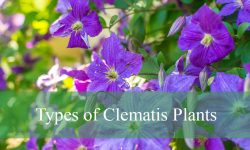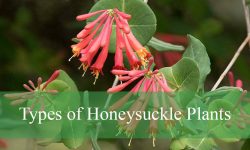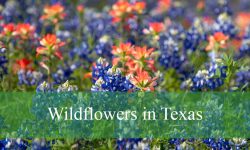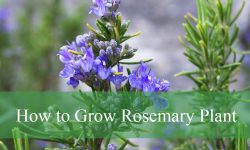The texture and color of a tree’s bark is a fundamental characteristic that frequently stands out when recognizing it as a particular species. Some trees distinguish themselves from others by having smooth, gray bark. Ten tree species distinguished by their characteristic smooth gray bark will be discussed in this article. This list of these remarkable trees can help you identify them whether you’re an arborist, a nature lover, or just interested in the natural world.
Birch Trees
Birch trees, which are recognized for being deciduous, are frequently found in a variety of natural environments, including forests, riverbanks, and mountain slopes. These hardy trees flourish in USDA Hardiness Zones 2 through 6, and they can even withstand the more severe winters of Zone 7.
Birch trees can be easily identified thanks to a few distinguishing features. Their bark has a papery feel and is covered in dark horizontal streaks called lenticels, which give the surface a distinctive pattern. The bark typically starts out looking reddish before turning grayish-white or silver in color. It gradually flakes off in thin slices, revealing the vivid pink, orange, or rust-brown hues underneath.
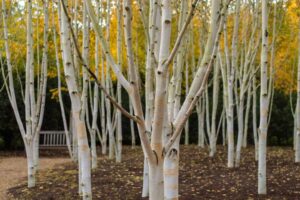
Birch trees can be identified by their thin, conical shape, which is emphasized by their ethereally arching branches. Their leaves, which are normally 2-3 inches long, have serrated edges and come in a variety of shapes, such as ovals, triangles, or diamonds. When autumn finally arrives, the foliage transforms into a dazzling display of warm tones of yellow, bronze, orange, and finally, brilliant red.
Birch trees can grow up to 70 feet in height, depending on their size. Early to late spring is when they blossom, giving rise to graceful, hanging spikes of golden or purple-hued flowers that add to their allure.
Red Maple
Deciduous red maples can be found in a variety of landscapes, including dry ridges, peat bogs, and marshy places, and they flourish in USDA Hardiness Zones 3 through 9.
You may see various identifying characteristics of these trees. Their bark first appears smooth and a light gray color, but as time passes, it changes, becoming rough vertical ridges and gradually flaking off in large flakes. Early on, red maples often have an erect, pyramidal growth pattern; as they develop, this pattern changes to a more rounded canopy. Twigs start out looking glossy and green, but as fall approaches, they start to become reddish.

Red maples are also known for their wide leaves, which range in size from 2 to 5 inches. They maintain the traditional five-lobed shape of a maple leaf. These leaves change dramatically in the fall, going from a light green to an array of beautiful hues like vibrant crimson, rich burgundy, fiery orange, and brilliant yellow.
Size-wise, red maples often grow to heights of 60 to 90 feet. Usually between early and mid-March, they produce dense clusters of reddish-golden flowers that brighten their surrounds.
Ash
Ash trees, prized for their deciduous characteristics, flourish over the wide range of USDA Hardiness Zones 3 through 9. These arboreal beauties typically adorn wooded areas and the high banks of wide streams.
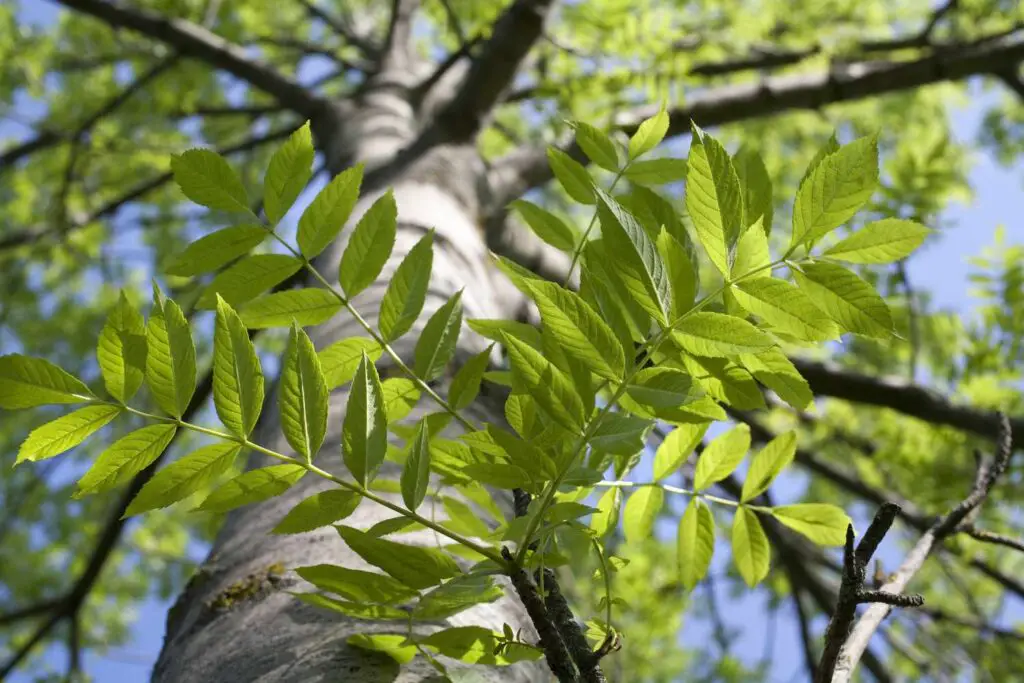
Consider the following defining traits to help you recognize these magnificent trees:
– Ash tree bark appears as a smooth, light gray canvas when it is still in its early stages. But as the tree becomes older, a startling change takes place. Deep fissures and vertical ridges progressively carve their way across the surface of the stem, interrupted by knots and asymmetrical structures. The bark develops a deep and complex grayish-brown patina with time.
– Ash trees are renowned for their development pattern, which involves their creating a wide, oval-shaped canopy that grows from a trunk that is about one meter in diameter. Their shoots and branches have a lovely curvature and flourish as they rise to the heavens.
– Ash tree leaves have a distinctive deep green color and can take on a variety of shapes, from a lance-like arrangement to more ovular forms with serrated edges. These lush leaves normally have a generous length of 8 to 12 inches.
– The ash tree’s leaf goes through an amazing transformation as autumn enters the scene, giving up its summery appearance to don a magnificent coat of golden-yellow hues and illuminate its surroundings.
– Ash trees usually reach heights between 30 and 50 feet in terms of size. They grace the planet with profusions of tiny, almost ethereal flower clusters that range in color from pure white to regal purple, and which usually ornament their branches in the enchanted months of April and May. It is noteworthy that these trees hold out on their blooming display until they have survived for almost three decades.
Desert Ironwood
These robust deciduous trees, which are well-known for their resilience to dryness, are frequently seen in the dry landscapes of the southwest deserts, where they thrive best in USDA Hardiness Zones 9 to 11.
Take note of the following distinctive traits to help you recognize them:
– The bark first seems smooth and iron-gray, but as time passes, it changes appearance. Horizontal fractures develop, giving rise to a number of pointed horns that pierce the surface.
– These trees have a multi-trunk growth pattern and strong, wide-spreading branches that merge to form a canopy that is about 30 feet wide and almost reaches the ground.
– The leaves of these trees have a distinctive shape, with 2 to 4 “fingers,” each with several pairs of small, spherical leaves that are between 0.7 and 2.5 centimeters across. During the dry winter months, these gray-green leaves shed their tiny, pointed hairs that are present on the undersides of each leaf.
– They are normally between 20 and 50 feet tall in stature. Their ultimate achievement appears as clusters of blooms, coloured in shades of purple or pale-pink, that adorn the branches between the lovely months of April and May.
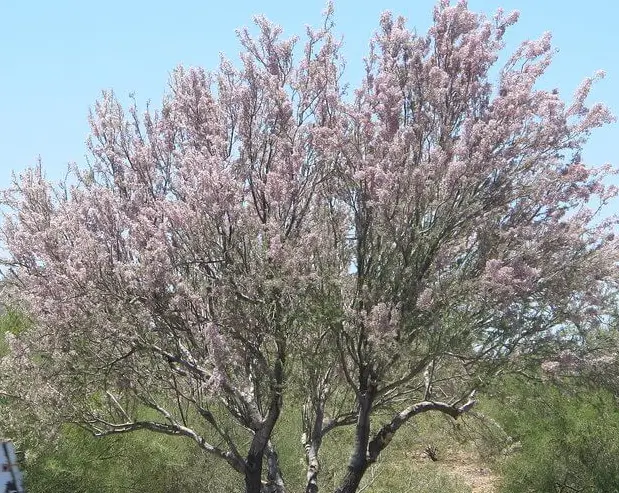
Smooth Bark Eucalyptus
The USDA Hardiness Zones 7 to 11 are the ideal growing range for these perennial trees, and most of Western Australia’s native habitat may be found along the coast and at higher elevations.
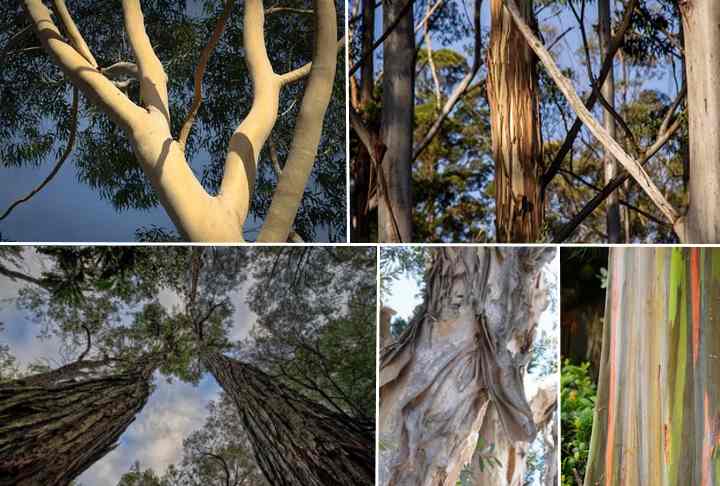
Consider the following distinctive traits to recognize these trees:
– The bark sheds yearly and typically has a light gray or white colour. As the bark ages, it develops long, ribbon-like curls that fall off. This layer-shedding enhances their aesthetic attractiveness by exposing layers of orange, brown, or snowy-white underneath.
– The tree can develop in one of two ways: either as a tall, single trunk structure with steep branches that form a dense crown canopy, or as a multi-stemmed organism that rises from the ground with branchlets that give rise to an airy, branching appearance.
– These trees’ leaves initially have a broad, lance-shaped shape, which develops into a narrower shape as they get older. The leaves continue to grow throughout the fall and winter, but their coloration undergoes an enthralling transition, taking on shades of copper, purple, or burgundy, depending on the particular type.
– These trees range in height from 9 to 49 feet, which is a sizable variation. Between the months of February and June, they develop flower buds in groups of seven, which later unfold into graceful, cup-shaped white blossoms, enchanting the landscape with their presence.
Mexican Sycamore
Mexican sycamores are majestic, huge deciduous trees that grow along flowing streams and in lush tropical jungles. They thrive in the USDA Hardiness Zones 7 to 10, which are where they find their ideal habitat.
To identify these arboreal marvels, look out for the following distinguishing characteristics:
– The bark has a variety of hues, from light brown to powdery white. The tree undergoes an enthralling change as it ages, shedding its bark in swaths to reveal a supple, cream-colored layer underneath.
– Mexican sycamores have a sturdy trunk base with a diameter of about 2 meters, and they have a rounded, bushy growth habit. When these sycamores reach maturity, they enlarge their territory by spreading their branches to a width of 30 feet.
– Their enormous 8-inch-wide leaves have an olive green color and silky, silvery undersides, and they resemble the classic Canadian maple leaf in shape.
– Mexican sycamores undergo a magnificent transition when fall takes over the landscape, adopting an opulent mantle of rich, golden-yellow hues.
– These beautiful trees often reach heights of 40 to 80 feet, depending on their size. They add a bit of whimsy to their natural attractiveness during the months of December and February by decorating their branches with unusual blossoms that resemble bristly green balls.
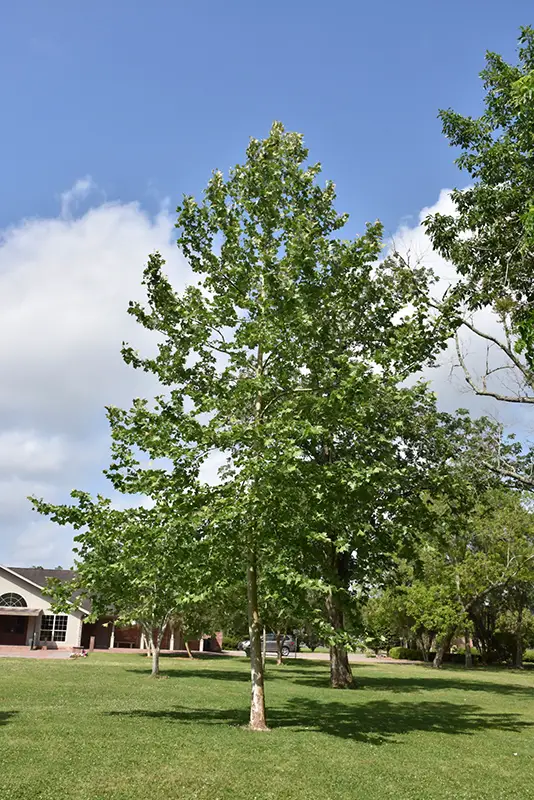
Hornbeam
Compact hornbeams, the deciduous shade keepers, frequently occupy the understory of woods and woodlands, lending the area a tranquil air. Within the boundaries of USDA Hardiness Zones 3 to 9, their vitality flourishes.
Pay attention to the following characteristics to recognize these exceptional trees:
– The bark of hornbeam trees travels, beginning as a young, grayish-brown canvas, then changing into an elegant, bluish-gray shade. It develops vertical furrows and recognizable flaring ridges over time, giving it character and texture.
– These trees create impressively dense canopies that take on an oval form to block the sun’s beams. As a result of the exquisite twisting of their stems, which are small in stature, the trees’ distinctive attractiveness is enhanced.
– The tiny hornbeam has oval-shaped leaves that range in length from 2 to 4 inches. They have heavily serrated edges and highly ridged veins that give them a complex appearance.
– These leaves undergo a mesmerizing transformation as summer draws to a close, changing from their dark-green clothing to an amazing palette of golden-yellow, fiery red, or deep orange colours.
– Compact hornbeam trees often grow to a height of 20 to 30 feet, making them the perfect companions for those looking for shade. They adorn themselves with pendulous flower spike clusters in April, which sway in green and reddish-brown hues and lend the arboreal scene a touch of elegance.
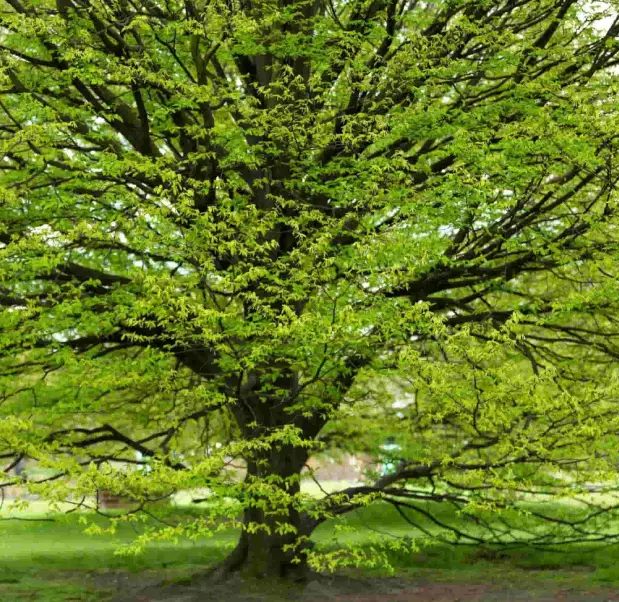
Japanese Stewartia
Petite deciduous trees known as Japanese Stewartias, which thrive in USDA Hardiness Zones 5 to 8, have carved out a niche for themselves in the serene havens of damp woodlands and the shadowed embrace of mountainous terrain.
Take note of these fascinating trees’ distinguishing characteristics to get to know them:
– The bark, which was previously decorated with a light gray exterior, goes through a captivating transition as the leaves fall elegantly in the autumn. During this time of year, the bark peels off, revealing a gorgeous mosaic of charcoal-gray, reddish-brown, and orange tones that is reminiscent of the artistry of nature.
– Japanese Stewartias have a light, graceful, pyramidal growth habit, and their semi-weeping branches add a touch of elegance to their overall appearance.
– The leaves are a tiny 2 inches in length and have a matte dark green allure. They take on an ovular shape with pointy points.
– The leaves of Japanese Stewartias bursts forth in a bright display of oranges, reds, and burgundies as fall unfolds its color pallet, presenting a lovely tableau against the background of the countryside.
– Japanese Stewartias claim to be between 12 and 40 feet tall, making them adaptable companions in a variety of environments. Early summer sees the development of their exquisite cup-shaped flowers, which are distinguished by five immaculate white petals embellished with coiled yellow anthers. These flowers lend the natural world a touch of elegance and grace.
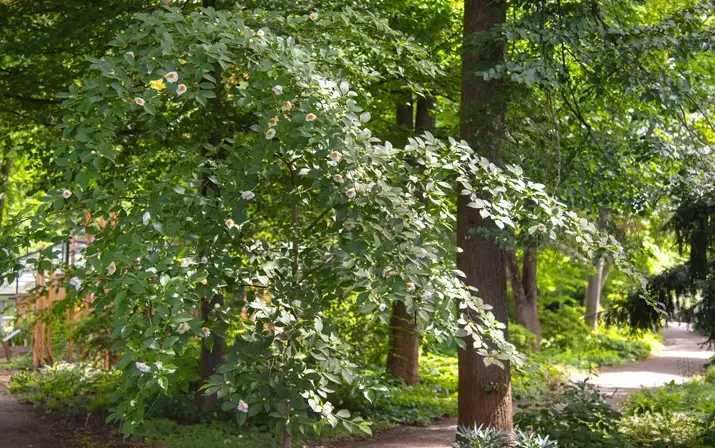
Paperbark Maple
They frequently live in lush, protected nooks and are small, slowly developing deciduous trees that flourish in USDA Hardiness Zones 4 to 8.
Observe the following specific traits to familiarize yourself with these endearing trees:
– Depending on the type, their sleek, vivid bark can have a range of colors from chestnut-brown to cinnamon or even a startling orange. This bark’s underlayer is decorated with subtle rose or tan tones as it delicately peels away in papery curls.
– The trees grow in a rounded, fan-like form, with their gently arching slender limbs upward.
– The three-lobed, dark-green leaves range in length from three to six inches and have shallow serrations along their edges. Their undersides take on a seductive gray- or bluish-green tint.
– The foliage changes as the days become shorter and the air gets crisper, painting the surroundings in a vibrant palette of reds, oranges, and touches of reddish-green.
– 20 to 30 feet is the appropriate height for paperbark maples to compliment a variety of environments. They produce tiny, pendulous yellow blossoms in the middle of April and May, but their appeal rests in the grace they provide to the surrounding environment. They may not draw much attention with their flowers.
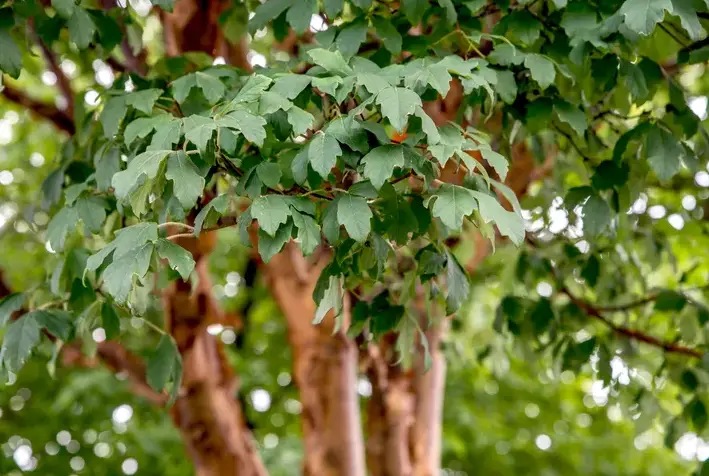
Beech
Beech trees that are deciduous thrive in a variety of environments, including damp forests, forested hillsides, and the shady banks of calm rivers. They are resilient in USDA Hardiness Zones 3 through 9.
Take note of the following distinctive qualities to get to know these amazing trees:
– With time, the bark, which was once smooth and had a silvery-gray shine, matures, taking on knots, lumps, and eventually shallow ridges that gently cross the trunk horizontally.
– Although some species show the presence of numerous large trunks with branches that extend near to the earth’s surface, the trees typically have a dominant single trunk and a characteristic pyramid to rounded crown pattern.
– The impressively long leaves, measuring 6 inches, have an elliptical shape with pointy points and clearly marked parallel veins. When fall touches the landscape, the foliage changes dramatically, going from a rich shade of green to an enchanting spectrum of yellow, orange, and copper tones.
– Winter reveals the tree’s fascinating branch structure, which has a pronounced zig-zag pattern. Many of the bronzed leaves from the previous season continue to grow throughout the winter, giving the scenery a touch of country charm.
– Beech trees generally reach heights of 60 to 80 feet, adding to the beauty of nature with their imposing presence. They give a touch of elegance to the arboreal symphony of the season in the middle to late spring when they ornament their branches with drooping clusters of tassel-like blossoms in yellowish-green hues.
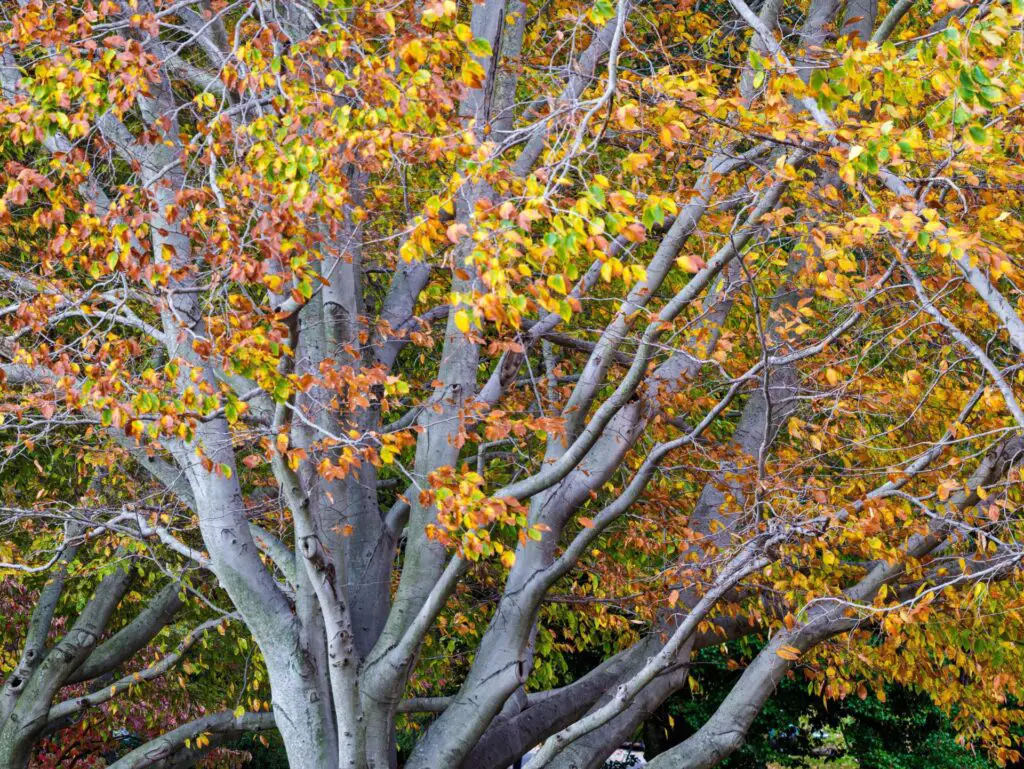
Conclusion
The world of trees is home to a variety of enthralling species, many of which have smooth, gray bark that not only enhances their aesthetic appeal but also acts as a distinctive identifier. Discovering and classifying these ten varieties of trees with smooth gray bark may be a fun and educational experience, regardless of whether you’re an arborist, a nature lover, or just someone who appreciates the beauty of the natural world. They serve as a constant reminder of the great biodiversity our world has to offer and the value of protecting these natural treasures for future generations because of their variety of traits and capacity to adapt to varied temperatures and settings. So, the next time you wander through a park or through the woods, look out for these amazing trees and stop to admire them.

